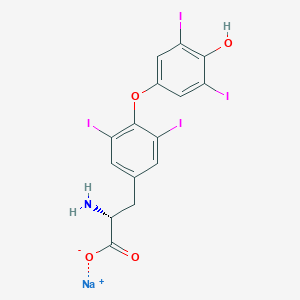-
Categories
-
Pharmaceutical Intermediates
-
Active Pharmaceutical Ingredients
-
Food Additives
- Industrial Coatings
- Agrochemicals
- Dyes and Pigments
- Surfactant
- Flavors and Fragrances
- Chemical Reagents
- Catalyst and Auxiliary
- Natural Products
- Inorganic Chemistry
-
Organic Chemistry
-
Biochemical Engineering
- Analytical Chemistry
- Cosmetic Ingredient
-
Pharmaceutical Intermediates
Promotion
ECHEMI Mall
Wholesale
Weekly Price
Exhibition
News
-
Trade Service
| Where does climate change lead to wheat breeding? |
The above picture is the wheat variety regional test station of the International Corn and Wheat Improvement Center in Mexico
.
Photo courtesy of the intervieweeThe above picture is the wheat variety regional test station of the International Corn and Wheat Improvement Center in Mexico
On August 30, "Nature-Plants" published online the latest results of the cooperation between Henan Agricultural University and the International Center for Maize and Wheat Improvement (CIMMYT), which for the first time systematically analyzed the global wheat regional trials in the past 40 years from 1980 to 2018.
The changes in some traits reveal the law of interaction between wheat genes and the environment
.
Data analysis based on long-term and large-scale regional trials
Data analysis based on long-term and large-scale regional trials "The most common method for evaluating the performance of wheat strains is multi-year multi-point regional trials of varieties
.
" Xiong Wei, the first author and corresponding author of the paper, CIMMYT-Henan Maize and Wheat Improvement Center (Henan Agricultural University) and International Maize and Wheat Improvement Center, told "China Science Daily, because the genetic attributes of crops are expressed differently under different environmental conditions, before new varieties are promoted and further hybridized, these varieties will generally be developed under multiple environmental conditions and multiple management levels.
Matthew P.
Reynolds, the author of the paper and a researcher at the International Center for Maize and Wheat Improvement, introduced that the center has been cooperating with breeding institutions and individuals in various countries since the 1970s to establish an international wheat breeding network
.
The website has established a series of targeted long-term test platforms to evaluate and screen wheat varieties of different strains, such as the durum wheat variety IDYN in the Mediterranean region and the high temperature resistant wheat variety IHWYT
"Each breeding test platform of the International Maize and Wheat Improvement Center has its own specific goals
.
" Reynolds said, taking high temperature resistance breeding as an example, the International Maize and Wheat Improvement Center will first select from its gene bank or alternative varieties provided by key regions.
Researchers and institutions participating in the test generally have broad spatial representation and promise to provide test data according to certain standards, including growth period indicators, yield traits and resistance
.
Subsequently, the researchers will conduct statistical analysis on the data submitted each year, such as the yield performance between varieties, phenotypic differences and their impact on yield
.
By comparing the genetic pedigree of the variety and their performance in different environments, the genetic properties, stability, environmental suitability, etc.
"Using this strategy to evaluate wheat performance can provide iterative feedback for wheat breeding strategies
.
" Xiong Wei said, using the latest genetic technology to develop high-yield, high-quality and stress-resistant germplasm resources with universal adaptability and environmental stability.
Xiong Wei told China Science News: "These long-term and large-scale test data are the data basis for this research
.
" The International Corn and Wheat Improvement Center has 28,000 copies of corn and 150,000 copies of wheat resources, ranking first in the world
Variations in the ranking of wheat quality in different environments
Variations in the ranking of wheat quality in different environments "Under the background of global climate change, the in-depth study of the interaction between genes and the environment will help us understand the differences in the expression of genetic material under different environments and different managements and the reasons, so that we can design targeted breeding strategies.
, Adjust the design plan of the variety regional test, carry out the environmentally-specific variety layout and promotion work, etc.
" Xiong Wei said
.
Due to the influence of gene-environment interaction, to judge the pros and cons of wheat varieties, the ranking of the varieties in each environment is generally used instead of the absolute value of the traits
.
For example, when the same phenotype (such as yield) of two varieties changes under two environments, it indicates that the performance of the two varieties under these two environments is different, and there is a significant difference, indicating that the two varieties cannot be separated from each other.
Select a better variety that adapts to these two places at the same time
Xiong Wei introduced that to determine whether or not a ranking change occurs between varieties, it is necessary to construct a linear relationship between each variety's trait factors (such as yield) and environmental factors (usually the average value of traits in different environments)
.
When the linear fitting lines of two varieties cross within the range of the environmental gradient, it is considered that a ranking change has occurred, otherwise, there is no ranking change
.
Therefore, “the higher the probability of a variety ranking change in a breeding experiment platform, the lower the possibility of finding universally dominant varieties
.
” Xiong Wei said
.
According to Thomas Payne, the author of the paper and a researcher at the International Corn and Wheat Improvement Center, they studied the test data of four wheat varieties on the global breeding test platform: two high-yield varieties ESWYT and IDYN, mainly focusing on the improvement of yield, the environment and management of each test site The level is relatively good; the two stress resistance breeding HTWYT and SAWYT mainly focus on how to improve the high temperature and drought resistance of the varieties.
The environment and management level of the test sites are relatively low, such as rain-fed
.
The study found that for high-yield breeding, climate change increases the probability of ranking changes by 15%; for stress-resistant breeding, the probability of ranking changes has not changed significantly, but has a decreasing trend
.
"This shows that climate change has made the selection of high-yield breeding more difficult, while the difficulty of selection of resistance breeding remains unchanged or even reduced
.
" It is easier to show higher suitability and stability in a warming environment, thereby reducing the possibility of sorting changes among varieties, and providing a greater possibility for selecting high-temperature resistant germplasm resources
.
Strategy selection of wheat breeding under climate change
Strategy selection of wheat breeding under climate change Through trend analysis of the historical data of the breeding programs of the above four varieties, the team found that the gene-environment interactions of the four programs all have a significant upward trend, and the probability of ranking changes among varieties has increased
.
Further calculations found that climate factors can explain more than 70% of the changes in ranking, with an accuracy rate of more than 80%
.
“Using the yield prediction model, we simulated the yield levels of past cultivars in all environments, and recalculated the probability of ranking changes
.
It was found that although genetic differences between varieties were still the main reason for ranking changes, climate change The time scale has already played a certain role and has begun to affect the efficiency of breeding
.
" Xiong Wei emphasized
.
They believe that climate change affects the gene-environment interaction mechanism in two ways: As climate change shortens the growth period of crops, the average output level of the experimental stations has decreased, and the proportion of low-yield stations has increased, thereby increasing the overall occurrence.
The probability of ranking changes; climate change has increased the spatial disparity of the environment, increased extreme weather events, and increased the inter-annual variability in the same environment.
The increase in environmental differences will increase the performance differences of crops in various environments, thereby potentially Increased gene-environment interaction
.
For this reason, they made suggestions for the selection of wheat breeding strategies
.
"For the first time, we have clarified that climate change has had an impact on global wheat breeding, and we have quantitatively analyzed the magnitude of this impact
.
" Xiong Wei said that the data shows that this impact cannot be ignored and needs to be caused by breeders and the government.
The department attaches great importance
.
At present, the average time to successfully breed a new wheat variety is about 4 to 7 years.
Due to the further intensification of climate change in the future, the breeding time of new varieties may be prolonged and the success rate will decrease
.
"This requires government departments to increase investment in research and development of new breeding technologies and methods, seek advantages and avoid disadvantages, and ensure and improve the current breeding efficiency
.
" Xiong Wei said
.
Secondly, due to the increased probability of variety ranking changes, it indicates that if the current breeding plan and breeding goals are maintained, the success rate of the most common high-yield breeding will be reduced
.
"Climate change will make future breeding goals balance between universality and regionality, and it is also necessary to re-division and layout of the experimental sites of the breeding platform
.
" Xiong Wei suggested
.
However, the rapid changes in the environment provide opportunities for the development of resistance breeding
.
They believe that the selection success rate and yield increase trend of resistance breeding under climate change may be higher than that of high-yield breeding
.
(Source: China Science News Li Chen)
Related paper information: https://doi.
org/10.
1038/s41477-021-00988-w
org/10.
1038/s41477-021-00988-w







